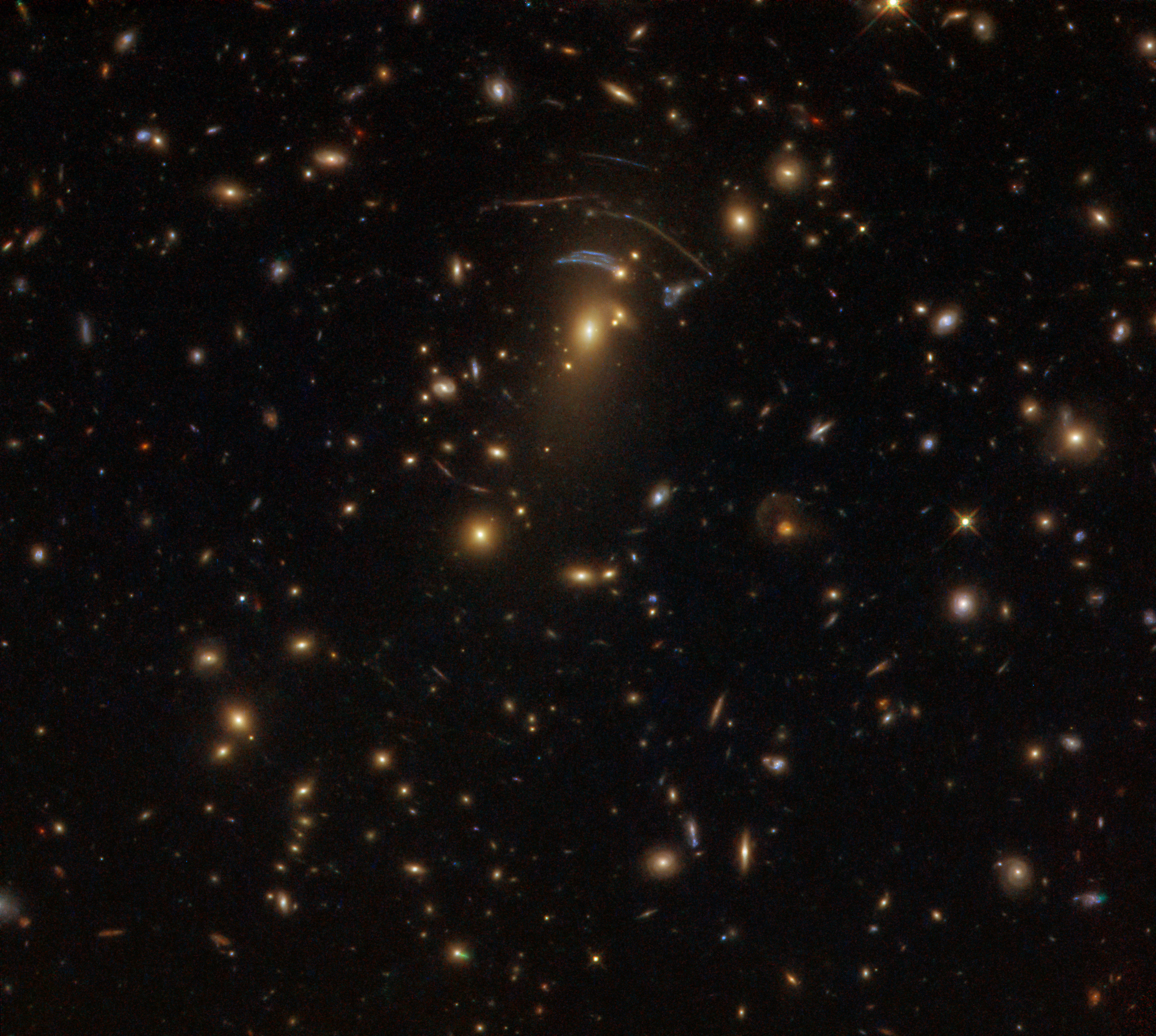Galaxy Cluster Distorts View of Distant Cosmic Neighbors in New Hubble Photo

NASA's Hubble Space Telescope photographed a stunning galaxy cluster whose gravity acts as a natural lens, bending and blurring the view of galaxies that lie behind it.
The galaxy cluster, also known as SDSS J1138+2754, was photographed using Hubble's Wide Field Camera 3. When a massive object, such as a galaxy cluster or a black hole, falls between an observer (like the Hubble telescope) and a more distant target in the background, it creates a so-called gravitational lens that magnifies the observer’s view.
Specifically, the powerful gravitational force of SDSS J1138+2754 distorts the space around it, causing light from objects in the background to travel along curved paths. As a result, the more-distant spiral and elliptical galaxies appear stretched into long, smudged arcs and scattered dashes, according to a statement from the Hubble Space Telescope. [Celestial Photos: Hubble Space Telescope's Latest Cosmic Views]
"Gravity is so much a part of our daily lives that it is all too easy to forget its awesome power — but on a galactic scale, its power becomes both strikingly clear and visually stunning," the statement said.
What's more, when the light from the distant objects reaches the observer after passing through a gravitational lens, it may appear magnified, as if it had passed through a giant telescope, or reflected.
"Since galaxies are wide objects, light from one side of the galaxy passes through the gravitational lens differently than light from the other side," according to the statement. "When the galaxies' light reaches Earth, it can appear reflected, as seen with the galaxy on the lower left part of the lens, or distorted, as seen with the galaxy to the upper right."
Therefore, some of the more-distant galaxies captured in the new Hubble image appear multiple times, because the gravitational lens distorts the light from the object similar to how fun-house mirrors distort a person's reflection.
Get the Space.com Newsletter
Breaking space news, the latest updates on rocket launches, skywatching events and more!
The new Hubble image was taken as part of a research project on star formation in the distant universe. In addition to SDSS J1138+2754, Hubble identified 73 other galaxies that also act as gravity lenses, according to the statement.
Follow Samantha Mathewson @Sam_Ashley13. Follow us @Spacedotcom, Facebook and Google+. Original article on Space.com.
Join our Space Forums to keep talking space on the latest missions, night sky and more! And if you have a news tip, correction or comment, let us know at: community@space.com.

Samantha Mathewson joined Space.com as an intern in the summer of 2016. She received a B.A. in Journalism and Environmental Science at the University of New Haven, in Connecticut. Previously, her work has been published in Nature World News. When not writing or reading about science, Samantha enjoys traveling to new places and taking photos! You can follow her on Twitter @Sam_Ashley13.









